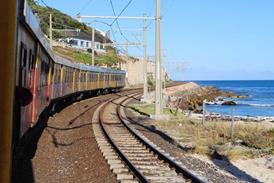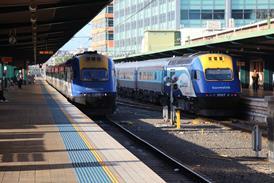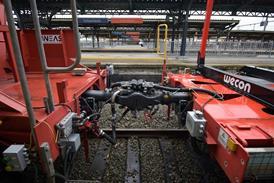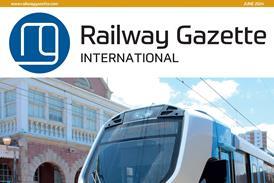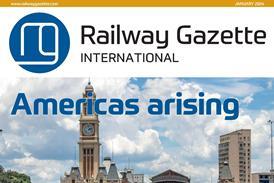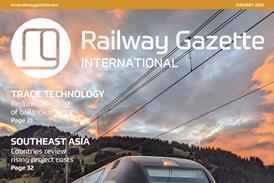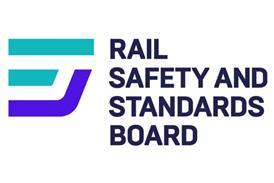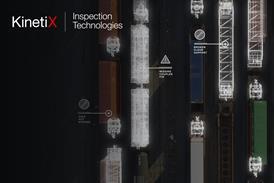Now in full swing, construction of a high-capacity line joining the main stations in Praha promises major improvements for local and long-distance services
Ing Jan Komarek
Director General
Czech Railway Infrastructure Administration
CONSTRUCTION of the new link is a complex undertaking that will see Praha’s two central stations, Hlavní and Masarykovo, joined with Liben, Vysocany and Holesovice, providing a modern, high-capacity connection between three of the Czech Republic’s key rail corridors. After many years of planning, on August 1 2004 work started in earnest on this major project that will see two new tunnels dug under the city, and the routes into Hlavní and Masarykovo from the north and east upgraded to increase capacity.
International passengers should also benefit from shorter journey times as maximum speeds are raised on routes into the centre of the city. The Czech capital will be provided with improved suburban services, as the current network does not provide access to the city centre for services from the north and the east. This should allow heavy rail to takes its rightful place in a modern, integrated public transport network, reducing dependence on the private car and benefitting the environment.
To minimise environmental impact, most of the new link will be in tunnel, including two double-track bores each 1350m in length whose construction involves both the New Austrian Tunnelling Method and conventional excavation. Work began on May 26 2005, dedicated as tradition demands to St Barbara, the patron saint of tunnellers.
Construction of these new bores and associated works constitutes one of the most complex transport infrastructure projects ever undertaken in the Czech Republic. There are four major viaducts, including a 322m long structure at Sluncová , 130m and 44m bridges at Balabenka and a 437m long structure near Masarykovo where construction of the concrete piers is now nearing completion. This will allow the parallel Husitská Street to be substantially widened, and in December 2005 a 309m long overbridge was completed at Krejcárek, replacing a level crossing and incorporating a heated road surface to prevent ice build-up. Working in close co-operation with our contractor, we were able to complete this project ahead of schedule in order to offer car drivers in Praha an early Christmas present.
Minimising impact
Comprising 28·5 km of track, the new link across Praha will be electrified throughout, with overhead line equipment specially designed to minimise visual intrusion in the city centre. Signalling and telecommunications equipment will require the laying of 43 km of optic fibre and 29 km of conventional cabling.
To mitigate the environmental impact of operational noise, sound-attenuating barriers nearly 3 km in length are to be built along the route, and by agreement with the city authorities a new cycle path is to be provided. Road access will be provided to the tunnel portals for emergency use. Spoil is being removed by rail to avoid adding to road congestion, and road closures are being kept to a minimum to reduce hardship for local residents.
In total, the project involves the construction of 267 separate structures, including the necessary technical facilities. It is being managed by our Praha Civil Engineering Division, while Sudop was responsible for project design. Construction is being undertaken by a consortium led by Skanska ZS which also includes SSZ, Metrostav and Subterra. The contractual completion date is December 15 2010, but we are currently examining the possibility of bringing this forward through an earlier release of funding for this KC10bn project.
SZDC’s corridor plan
On January 1 2003 two new companies were formed from the former Czech Railways, a train operator and Czech Railway Infrastructure Administration (SZDC). Since then, SZDC has been responsible for the modernisation and development of the 9 500 route-km of the national railway network, which has primarily been focused on the upgrading of four national transit corridors as well as major junctions along these routes.
Because of the Czech Republic’s location at the heart of the continent, the four corridors form a key part of the European railway network. SZDC’s Corridor 1 is a component of European Corridor IV, running from Berlin via Decín, Praha, Ceská Trebová , Brno and Breclav to Vienna and Bratislava. Incorporating the main section of SZDC Corridor 2, European Corridor VI links Gdansk with Katowice, Petrovice u Karviné, Ostrava, Prerov and Breclav, where it meets Corridor IV.
A strategic objective of the corridor modernisation programme is to provide high-quality international links between the Czech Republic and its neighbours, while meeting domestic needs for fast transport services between the regions. To meet these objectives in line with wider European policy to encourage modal shift from road to rail, SZDC is looking to upgrade its main lines in accordance with international best practice.
The key junction of Brno is also the subject of a major upgrading, following the signing of a funding agreement by the Ministry of Transport, the region of South Moravia, the city of Brno, Czech Railways and SZDC. This vital project will significantly affect the whole city and will allow Brno to become a key node on the European network of rail corridors.
- CAPTION: Now taking shape near Masarykovo is the first and longest of four viaducts to carry the expanded links north of Praha
- CAPTION: Much of the new link will run in tunnel, requiring two double-track bores under Vítkov hill, which will replace the existing single-track connection
- CAPTION: Construction of the new Vítkov tunnels and flying junctions will allow SZDC to eliminate the existing single-track bore and segregate trains on the two main routes approaching Praha Hlanví

